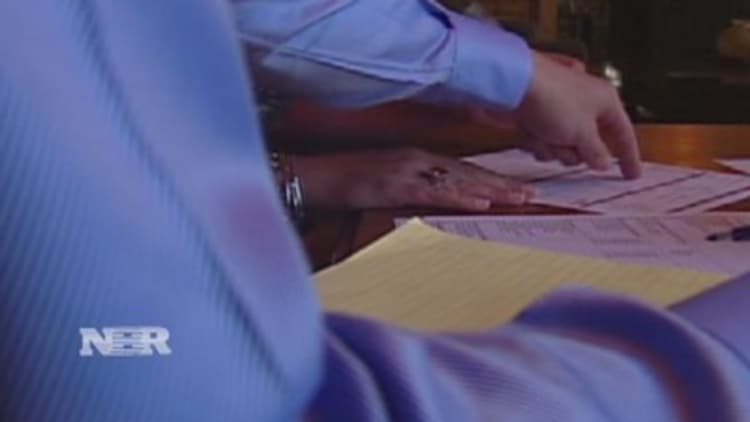
About one-fourth of Americans have no emergency savings, and that's barely changed in the past four years.
A household's lack of a financial cushion is pervasive across all income levels, according to a new survey from Bankrate.com. Even among high-earners—with incomes of $75,000 or more—the report found fewer than half of them have saved six month's worth of expenses.
The age group most likely to have no savings at all are 30 to 49-year-olds. Yet, "those are the households that have a house, two cards, three kids, a dog, they need that emergency savings more than anybody else," says Greg McBride, Bankrate.com's chief financial analyst.
Read MoreSavings showdown: Retirement or college tuition?
Experts at Bankrate say the reason savings are so slim is simple: Many Americans just don't have that extra money to sock away. That's because for many Americans, their paychecks have stayed about the same even as there have been modest increases in expenses for things like food. That's leaving little wiggle room in the budget.
Although some parts of the economy are starting to improve, Bankrate's surveys have shown household savings have been weak since polling began in December 2010.
The most recent Bankrate survey found that 26 percent of Americans have no emergency savings, about the same as in previous years. About 23 percent had six months or more of savings, which is an ideal amount that many experts had recommended. The rest have some savings, but not six months' worth, or did not answer.
Read MoreSavvy retirement investment planning
While unemployment, foreclosure and credit card debt have shown a slow but steady decline over the years, the percentage of people in the U.S. who do not have a personal financial safety net hasn't really budged. A 2014 study by the Corporation For Enterprise Development found that nearly half of households in the United States are "liquid asset poor," meaning they have less than three months' worth of savings.
The average savings is just $5,887 for a family of four. A quarter of the "liquid asset poor" are middle class households earning between $56,000 and $91,000 a year. The "liquid asset poor", according to the CFED study, defy many stereotypes: Most are white, employed, headed by two parents, and nearly half of themhave attended college.
Read MoreBoom to bust: Falling behind in your 40s and 50s
The reality is the obstacle that prevents many households from saving is a failure to plan how to do it.
"The biggest barrier to saving is not being in the habit of saving. Too many people try to do their saving this way: they wait until the end of the month, and try to save what's left over," says McBride. "Guess what? Most of the time nothing's left over. So saving doesn't happen."
—By CNBC's Sharon Epperson


